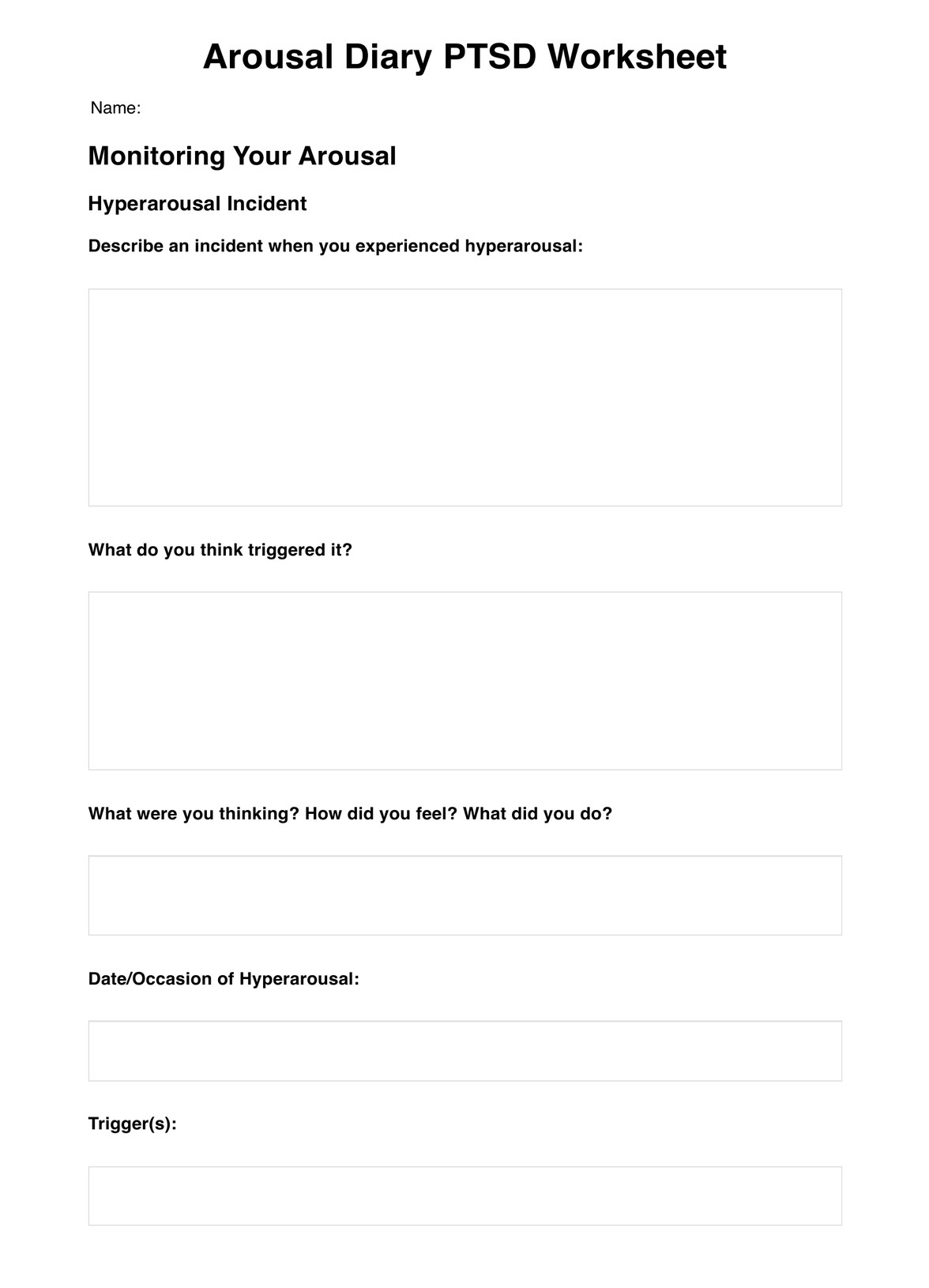The time taken can vary depending on the individual's personal experiences. However, it typically takes between 15-30 minutes.

Arousal Diary PTSD Worksheet
Manage PTSD effectively with our Arousal Diary PTSD Worksheet. Understand your triggers, monitor arousal levels & enhance coping strategies for better mental health.
Use Template
Arousal Diary PTSD Worksheet Template
Commonly asked questions
The worksheet helps individuals identify triggers, monitor arousal levels, implement coping strategies, and track progress.
It's best used during periods of heightened stress or anxiety or when an individual is experiencing frequent PTSD symptoms.
EHR and practice management software
Get started for free
*No credit card required
Free
$0/usd
Unlimited clients
Telehealth
1GB of storage
Client portal text
Automated billing and online payments











